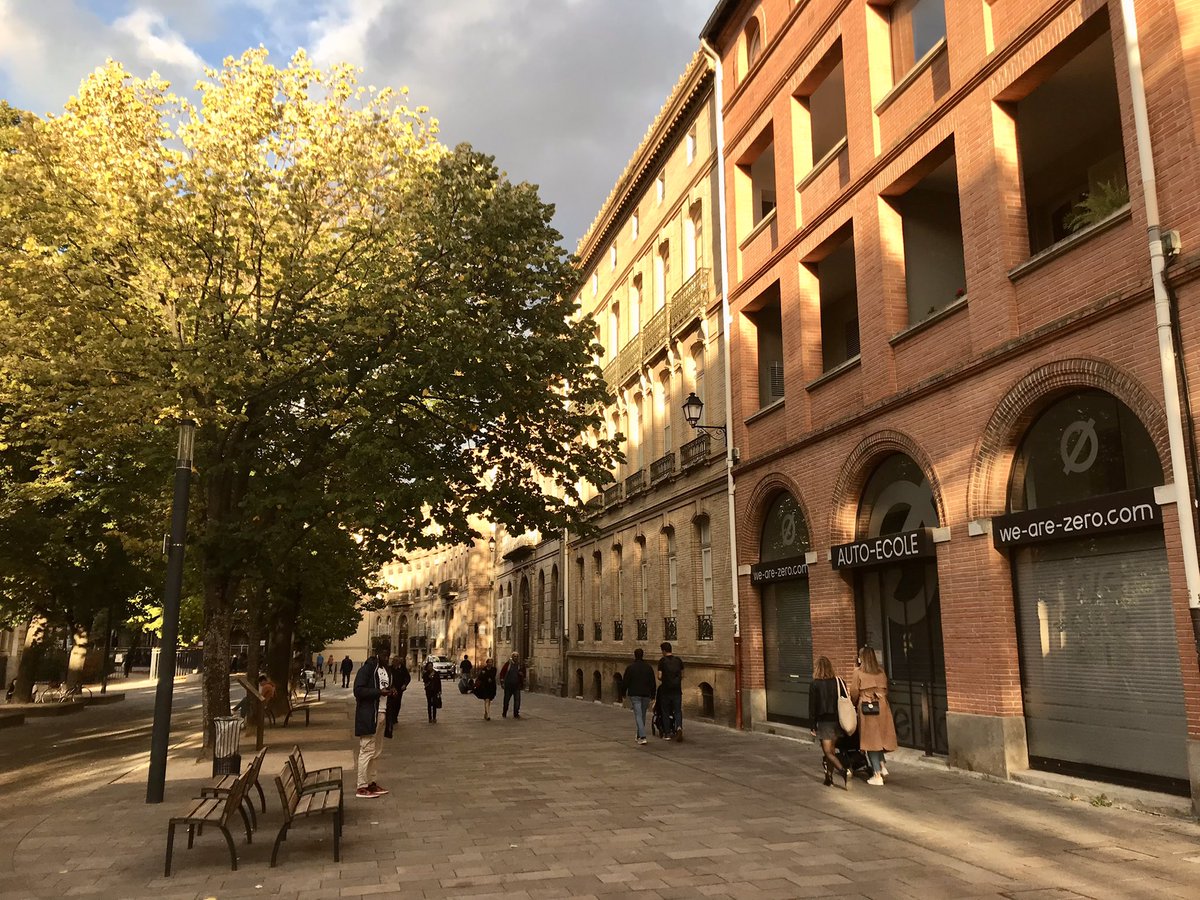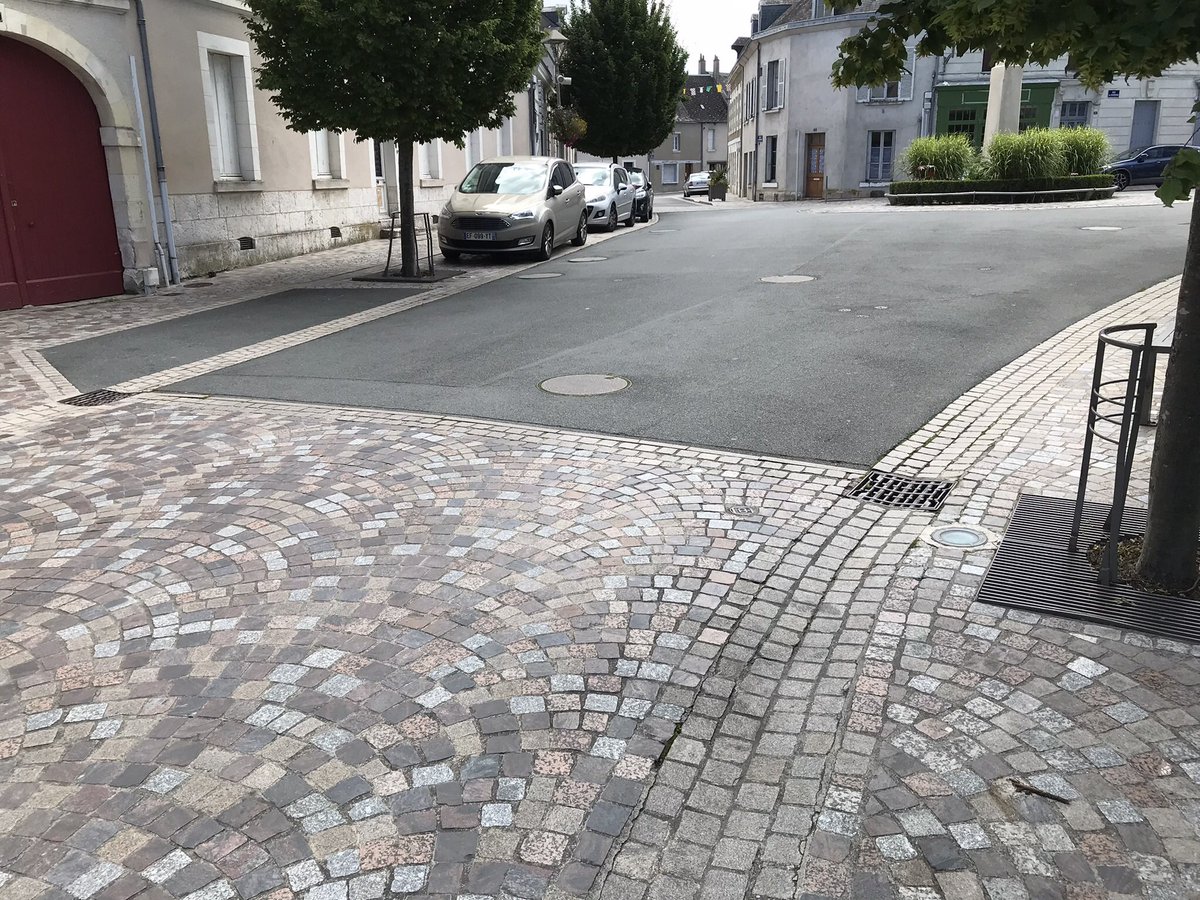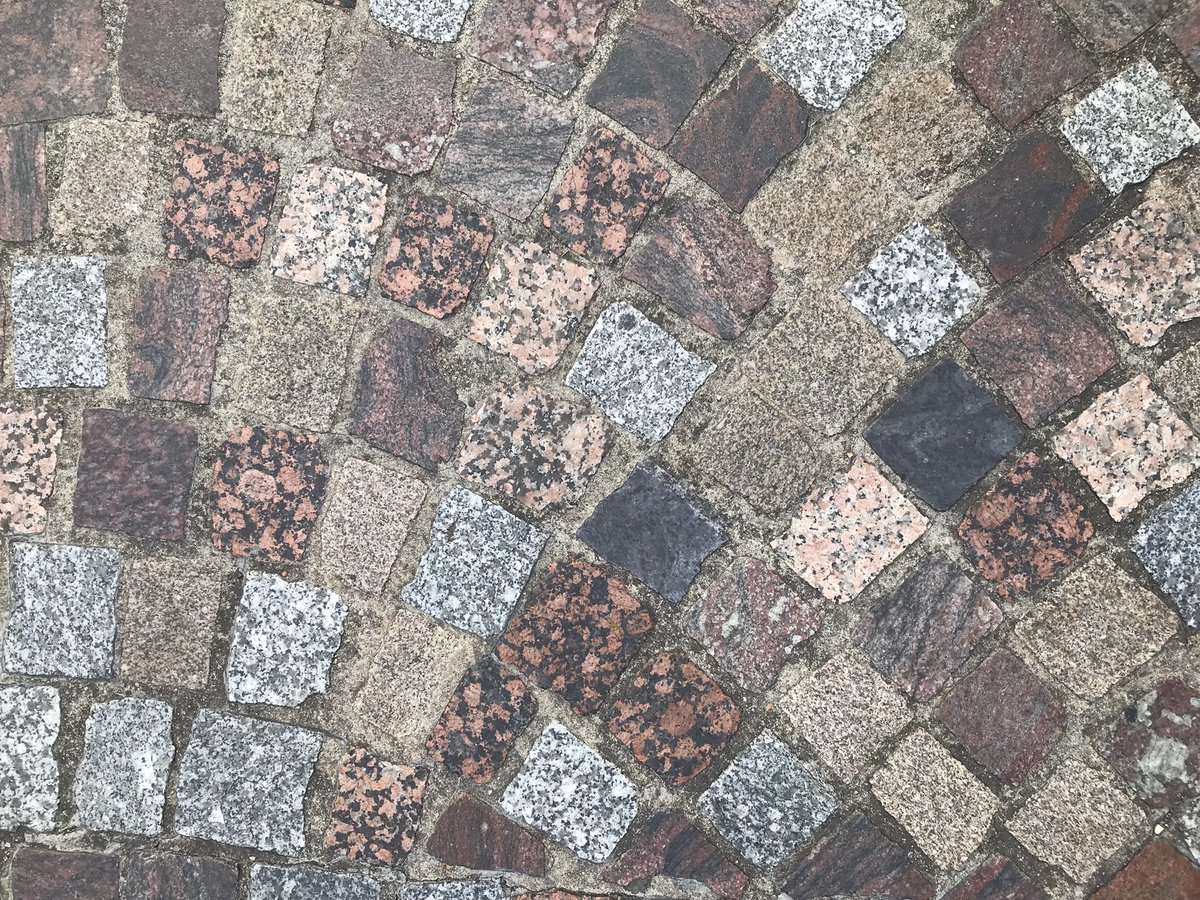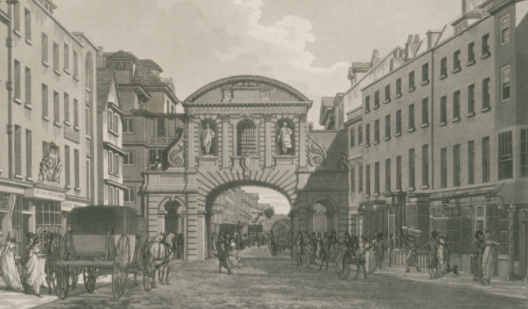
Ever heard of Toulouse as a city centre whose improved street design is revolutionising local prosperity?
It’s not normally lauded as a case study. But quality of the street design is staggering. The results are stunning. Literally no empty shops in town centre. How? A short 🧵



It’s not normally lauded as a case study. But quality of the street design is staggering. The results are stunning. Literally no empty shops in town centre. How? A short 🧵


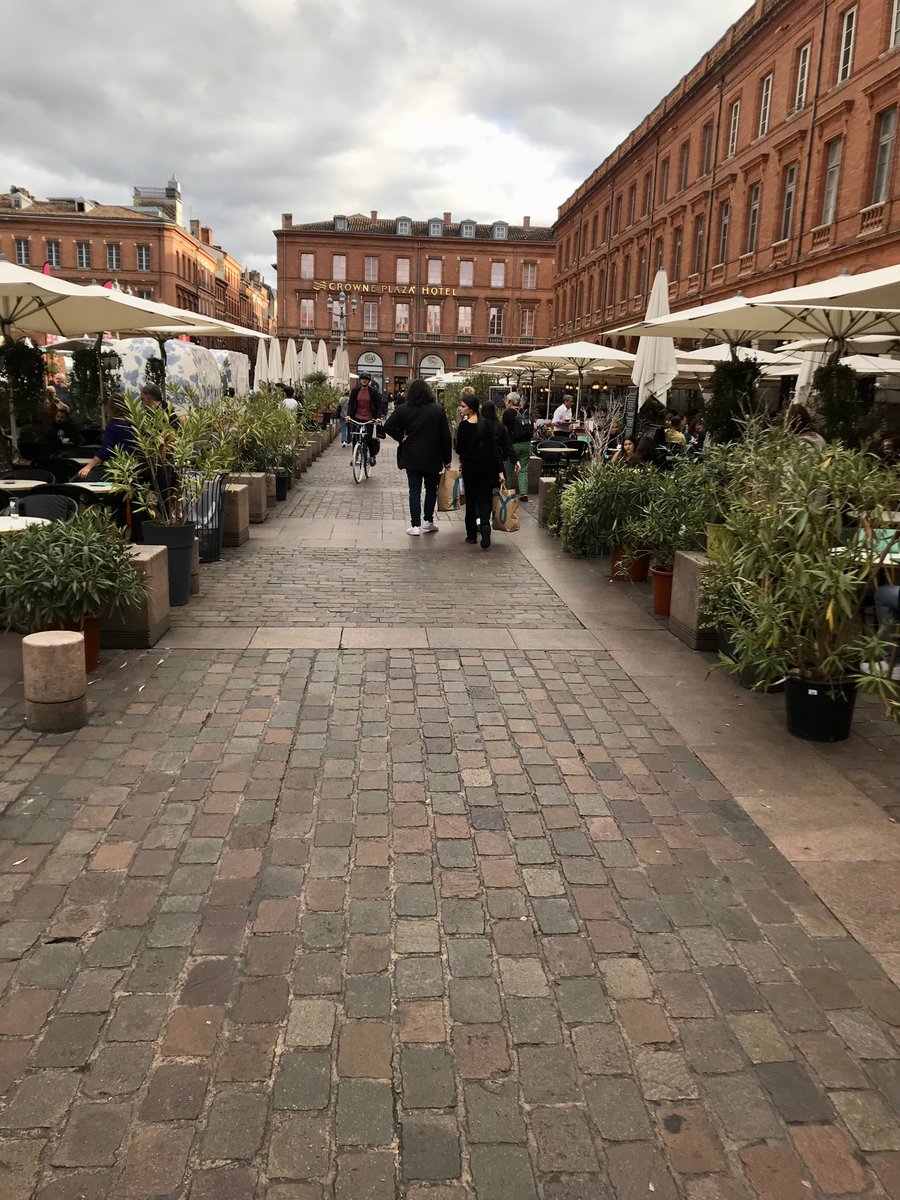

Well, it has to be admitted, they have a trick up their sleeve: the city centre’s buildings are almost uniformly beautiful, largely unscarred by war or traffic-modernism. Many … 

… are built from the region’s traditional "foraine" brick which is large and flat (like a Roman brick) and comes in a lovely range of ochres, reds, pinks and oranges. You can see why the French call it “La Ville Rose” … 

… They do have some white stone apparently historically brought down the Garonne River from the Pyrenees. They also paint some bricks. This gives a gloriously polychromatic effect…. 



… First of all the overall strategy is one of putting people first. Cars are permitted in much (not all) of the city centre but they are second-class citizens compared to the teeming hordes on foot, bicycle or scooter. In some streets (as here) they are … 

… contained by elegant bollards (cc @WorldBollard) in narrow carriageways… 

… this is the approach taken in most of the central streets but there are very few. It’s just easier to walk or cycle. The bollards are elegant, the pavements & carriageways are “at grade” (ie at same level) and … 

… the materials are excellent. This is one photo. From left to right you can see pavement, edge of carriageway and carriageway… 

There’s a 20kph speed limit in place (nearly?) everywhere but cars & mopeds (lots of mopeds) just drive carefully because they have to. Look how close this moped is to the pram. It would give most UK or US highways engineers a heart attack but in fact this is a VERY SAFE STREET. 

.. here’s another street which does permit cars but uses design to slow them down. Look carefully: you’ll see a car in distance. In front children walk safely in the carriageway. Nearly everything modernist town planning & highways engineers did undermines urban prosperity … 

There does not seem to be much city centre parking (though understand some a little further out) other than for disabled permit holders as here. It’s certainly not undermining shops’ vitality though. 

Did we mention the trees? Wherever the city opens up, they are planting gorgeous street trees with benches beneath and … 

… the combination of trees and those ochre bricks is frankly magical, even against an autumnal slate sky … 
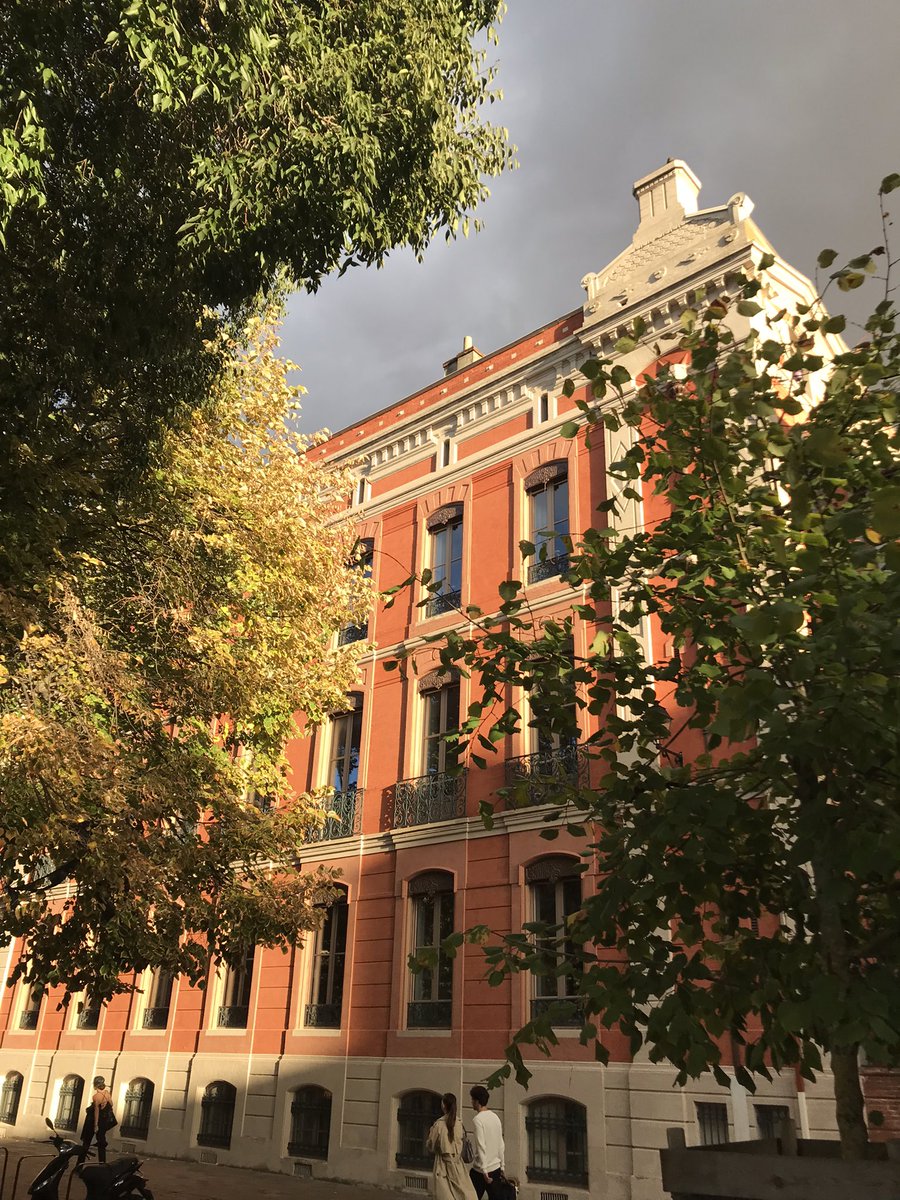
… there is some “filtered permeability” (as they say) without cars for at least part of the day. In some town squares … 

… but everywhere the same principle: people first. That’s often (very practically) expressed though continuous (sometimes called Copenhagen) crossings where the pavement continues across the carriageway of the secondary street. You can see the effect here… 

The results ? The results are glorious. City streets teeming with life, prosperity and movement, fulfilling the role that cities have played since the dawn of history as efficient places to come to buy, to sell, to work, to mart and to have fun in the process… 

… and long long into the evening (busy cafes, at grade streets and full bicycle racks tell a powerful story here which too many town councils ignore)… 
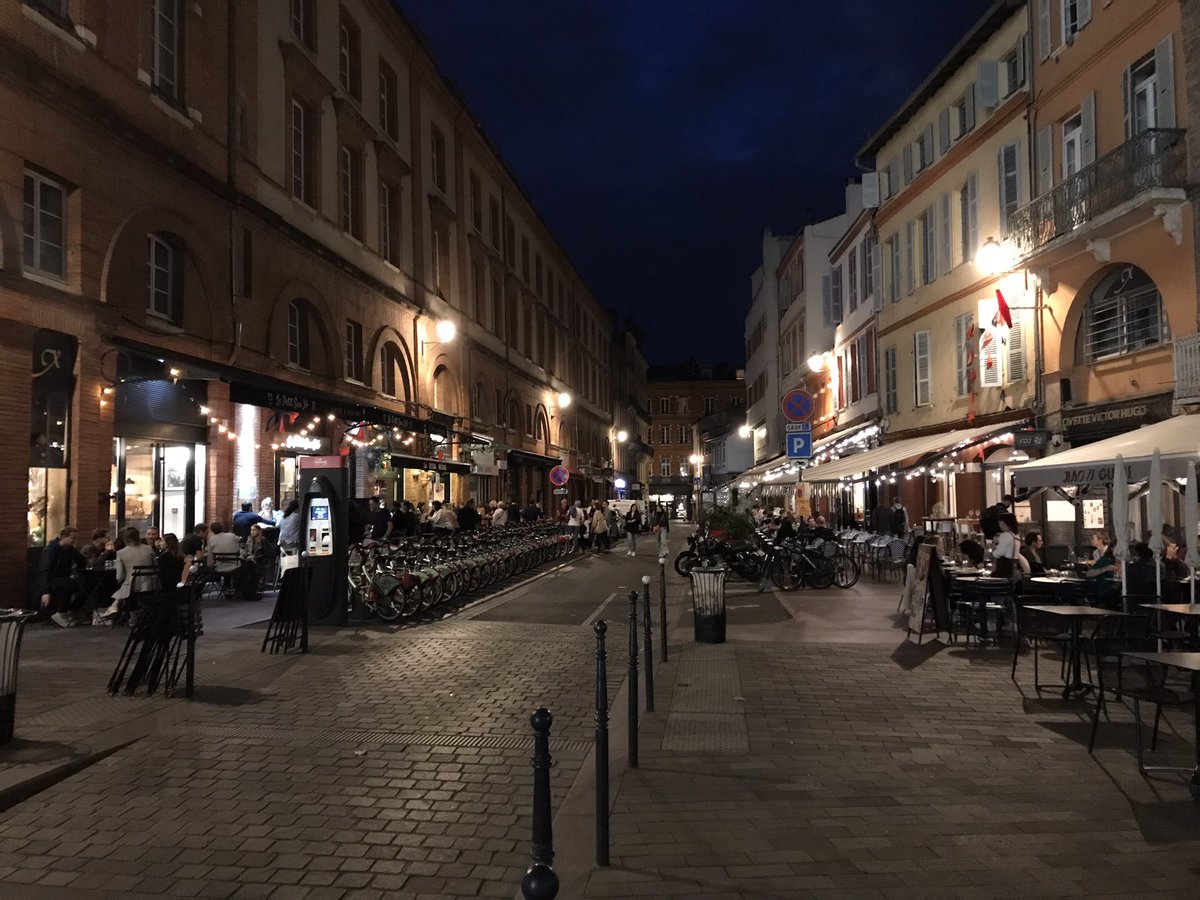
… should add, Toulouse gives back to children the liberty of movement lost over much of the last century. A hard thing to capture in photos but children constantly moving about on bikes, feet or scooters. You can see on left here (with a parent here but often unaccompanied)… 

… there must be some, somewhere (surely?) but genuinely did not see a single boarded up shop front in city centre … 

…global brands and chain stores are very content to comply with clearly strict local codes on acceptable design … 

… and (though we’ve not tried to check data) the overall state of the buildings strongly suggested that many were keen to live or work in the beautiful, busy city. What sumptuous #GentleDensity … 

Nearly there ! Have you noticed how there’s no garish paint or ugly signs cluttering up the city? Details matter. 

And a metro and tram system brings in the happy punters from the suburbs to shop and work, eat and meet. The tram reopened in 2010 and the bike hire in 2007. (In case you had noticed, it’s time for trams) 🚋 🚊 😃 

Impossible to summarise but here’re some implications
✅DO create (or preserve) beautiful buildings
✅ PUT people (& 🚴 & 🛴) first
✅ PROVIDE 🚲 hire & parking
✅ USE beautiful materials
✅ It’s time for trams
✅ Street 🌳
⛔️ LIMIT 🚗 parking
⛔️ NO garish paint & signs
✅DO create (or preserve) beautiful buildings
✅ PUT people (& 🚴 & 🛴) first
✅ PROVIDE 🚲 hire & parking
✅ USE beautiful materials
✅ It’s time for trams
✅ Street 🌳
⛔️ LIMIT 🚗 parking
⛔️ NO garish paint & signs

Underpinning these proximities are interwoven concepts of beauty, of respect for the precious & particular, the 15 minute city & urban re-greening. Some might seem “left wing”, some “right wing” but the evidence of their benefits for human prosperity & sustainable living is clear 

A longer 🧵 than intended (🤨) Finally, a huge huge thank you to the inspirational @CarlosMorenoFr for all his marvellous work & for so kindly inviting our founder @boys_nicholas to fascinating #ForumZéroCarbone with @France_urbaine and @LaTribune at #Toulouse 

And huge congratulations to @CarlosMorenoFr on richly merited 2022 Scroll of honour from @UNHABITAT #15MinuteCity 

Ps: here’s the sad stinger. Once you move away from the city centre Corbusian city-planning, roads not streets & faceless, barcode architecture reasserts itself: the enemy of sustainable living and of any sense of home in this world. This could be anywhere & so it is nowhere 😢 



Pps: but let’s end with hope for the future & a vision of the good life lived well in a beautiful, ancient city that can guide us well into the future. Happy, delicate, exquisite #Toulouse 🙏 “La Ville Rose” 







• • •
Missing some Tweet in this thread? You can try to
force a refresh




